by Rohit Ramnath, Master Bond Inc.
Silicone compounds are used in thousands of electronic systems to seal, bond, coat, and encapsulate components, enabling them to perform reliably under challenging conditions. Formulators continue to improve silicones to make them easier to use and to offer a wider variety of properties.
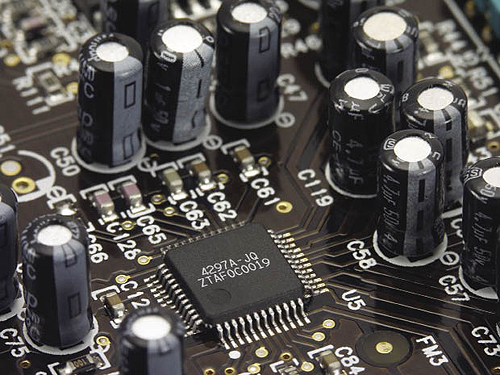
Silicones are often used to protect sensitive electronic components.
Since the 1980’s, the electronics industry has undergone explosive growth, as higher transistor densities have fueled substantial performance advances while paving the way for miniaturization. Initially developed for computers and communications systems, electronic circuits are now commonly used in nearly every major industry, in applications ranging from satellite systems in space to medical devices implanted in humans. For these systems to function properly, the electronic circuits within them must be protected from extreme temperatures, contaminants, shock and vibration, and harsh environmental conditions.
Silicones have played a major role in the electronics revolution, enabling greater function by sealing and coating sensitive electronics. Business, consumer, and military applications rely on silicones to protect electronic components from heat, moisture, contamination, and accidental damage. The number of applications benefiting from silicones has grown over the years, as the increased heat from additional transistors placed in smaller packages has called for higher temperature resistance to ensure reliability. Through their distinctive properties, silicones provide the protection electronics systems need to deliver performance in a variety of environments.
Silicones’ unique combination of properties
The molecular structure of silicones is different from that of epoxies and other organic polymers. The nature of the siloxane bonds (-Si-O-Si-) that form the backbone of silicone compounds delivers properties that are not found in other organic polymers. The geometry, stability, and high binding energy of these siloxane bonds make silicones more flexible and resistant to high temperatures than other polymers. It is this rare combination of flexibility and high temperature resistance that sets silicones apart.
Silicones adhere well to many surfaces and offer a number of other beneficial properties, (Table 1). They have a relatively low dielectric constant, high dielectric strength, low dissipation factors, and are exceptional electrical insulators — properties that are little changed over a range of frequencies. Silicones are durable, standing up to wind, rain, and ultraviolet light exposure with minimal effect on physical, mechanical, and electrical properties.
Silicones can typically withstand temperatures ranging from roughly -55°C to 200°C — with specialty formulations resisting temperatures as high as 300°C — while maintaining their other useful properties. The actual service temperature range and degree of temperature stability of a silicone can vary, depending on the specific chemistry of a formulation. Because of their stability over a range of temperature, humidity, and frequency, silicones are often selected for use in applications subject to challenging operating conditions.
Silicone formulations that address specific requirements
Silicones are available in one- or two-part formulations. Easy to apply one-part silicone systems do not require mixing, and cure at ambient temperatures by reacting with moisture in the air. Two-part silicone systems cure through a polymerization reaction initiated by adding a curing agent, and can cure in thicker sections than one-part systems. Both one- and two-part silicones adhere well to glass, plastics, metals, rubbers, and other surfaces, although some materials might require surface preparation. Notably, silicones are the only materials that will bond with silicone substrates.
Easy to apply one-part silicone systems do not require mixing and cure at ambient temperatures by reacting with moisture in the air.
Certain properties of silicone systems can be engineered to address specific application requirements. For instance, although silicones are natural thermal insulators, they can be made to be thermally conductive through the use of fillers. Fillers can also be used to improve the electrical conductivity of silicones, for use in applications that call for EMI/RFI shielding. Although silicones are most commonly translucent, they can be formulated to be optically clear or opaque, if needed, for optical and opto-electronic applications. Certain grades meet MIL-A-46146 and MIL-A-46146A Type 1 military specifications, or USP Class VI and other biocompatibility specifications. Because silicones do not ignite easily, they can be made to meet UL94V-0 and UL94V-1 specifications for flame retardancy, which is required for certain transportation, appliance, electro-optical, and other electronic systems.
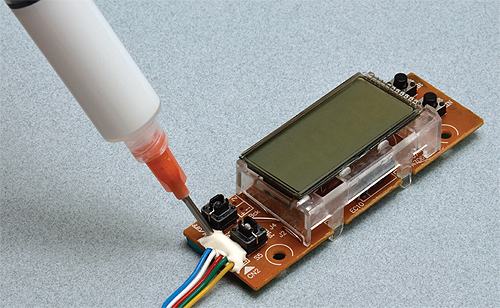
Certain properties of silicone systems can be engineered to address specific application requirements. For instance, although silicones are natural thermal insulators, they can be made to be thermally conductive through the use of fillers.
The hardness of silicone systems varies to some extent due to degree of cure and use of fillers. Fully cured silicones are considered to be softer elastomers. When fillers are used, silicones invariably become harder. Softer silicones are often selected for their ability to offer stress relief during temperature changes.
Silicones protect sensitive electronic components
Silicones’ wide service temperature range, flexibility, superior electrical properties, and ability to protect components from environmental contaminants make them useful as adhesives, sealants, coatings, and potting compounds. Their ability to withstand extreme environmental conditions gives them an edge over other types of adhesives and related compounds for certain applications.
Sealing and bonding
Silicones are commonly used to seal and bond substrates in the assembly of printed circuit boards (PCBs) and modules, and are the only type of adhesive that will adhere to a silicone substrate. Electrically conductive silicone adhesives can be used in place of solder for component attach. Thermally conductive grades can be used to bond microprocessors, LED (light emitting diode) arrays, and other heat generating components to heat sinks, ensuring an efficient path for heat transfer. Because silicones’ properties remain stable when subjected to high temperatures, they can withstand the heat that is characteristic of many operating environments.
Conformal coatings
Silicone-based conformal coatings electrically isolate all conductors on a printed circuit board (PCB) while protecting the electronics from humidity, temperature extremes, corrosives, and vibration. Applied as a thin, uniform layer during the final stages of manufacturing, these coatings offer low viscosity and good adhesion so that they flow easily, conform to the contours of an electronic assembly, and minimize the accumulation of moisture and other harmful contaminants. Silicone-based coatings can be formulated to be optically clear or exhibit low outgassing.
Because they maintain a low Shore durometer over a wide temperature range, silicones are often used in low stress applications to protect sensitive components in demanding environments. Flexible silicone elastomeric coatings can be applied in a thicker layer than their epoxy counterparts — affording a higher level of protection for applications that require maximum vibration dampening. An added benefit of silicone coatings is that they are easier to rework than other materials.
Potting and encapsulation
Due to their softness, high-temperature resistance, toughness, and electrical insulation properties, silicones are suited for many potting and encapsulation applications. Silicones are most often used in situations in which extreme thermal insulation and robust electrical insulation properties are paramount. Thermally conductive silicone compounds are used to encase devices such as power supplies, rectifiers, transformers, and sensors — transferring heat away from these components while protecting them from dust, humidity, temperature extremes, and vibration.
Silicone-based materials, including “glob-tops,” protect sensitive bare die and wire bonds. Specially formulated to be thixotropic, these special encapsulants flow smoothly in response to stress during application — covering the die and filling in gaps between wires — while rapidly increasing in viscosity so as to prevent them from flowing outside the target area. Silicone-based glob tops provide a resilient barrier against contaminants while supporting the delicate die and wires.
Key properties and benefits of silicones.
Multiple industries rely on silicones
Silicone-based adhesives, sealants, potting and encapsulation compounds are deployed in hundreds of consumer, business, medical, and military electronic systems. Silicones are used to seal, bond, and encapsulate mechanical and electrical parts, such as power transistors, rectifiers, and thermal switches, in cell phones, laptops, office equipment, and other computer and communications products. They protect electronic components in gaming systems, televisions, cameras, and home appliances — enhancing reliability and extending the useful life of thousands of consumer electronic systems.
Silicones are used in automotive systems, including airbag, brake, ignition, fuel, air, and transmission systems, to protect electronic parts from contaminants and to insulate them against extreme temperatures. In aviation and space systems, silicone adhesives, sealants, and encapsulants protect electronics from moisture and contaminants across a range of temperature extremes, ensuring the operational integrity of these complex systems. Hearing aids, pulse oximeters, defibrillators, and other medical devices depend on silicones to enhance reliability. Silicones are commonly found in power electronics and high frequency applications, protecting semiconductors in systems such as cell phone base towers, which are often exposed to harsh weather conditions.
Master Bond Inc.
www.masterbond.com
Filed Under: Appliance engineering + home automation, Semiconductor manufacture, Materials • advanced, ELECTRONICS • ELECTRICAL

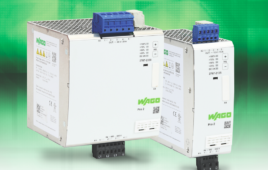

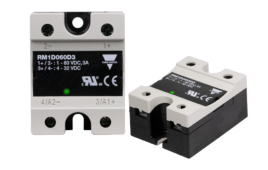
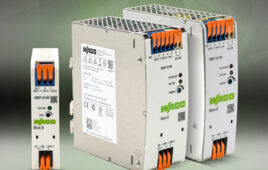
Tell Us What You Think!